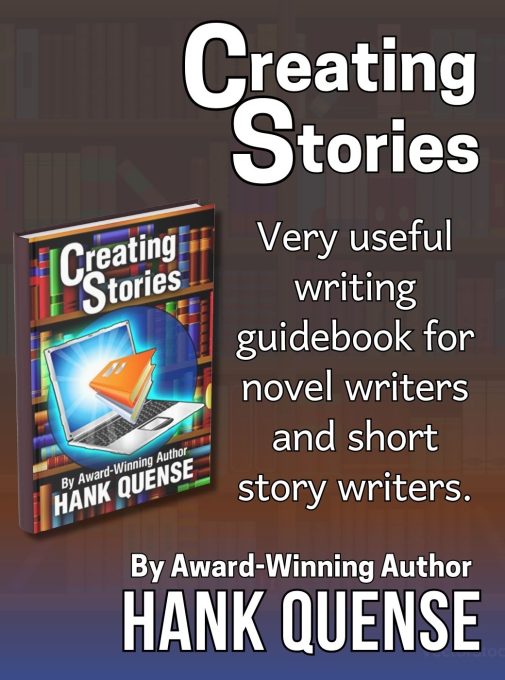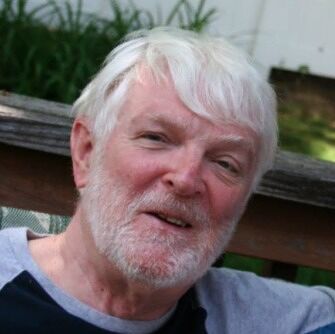Creating Stories
(FIction Writing)
Do you have a story in you?
Do you know how to write it or how to tell it?



Book Summary →
Creating Stories
Do you have a story in you?
Do you know how to write it or how to tell it? Creating Stories has the answers. Hank Quense, the author of more than twenty books, tells you how to do it. He believes that stories come from the melding of three elements: getting ideas, story design and story-telling. Ideas have to come from the author. Creating Stories covers the last two. The book concentrates on developing characters including such rarely discussed requirements such as a dominant reader emotion and the character’s biography. Plots are also covered in depth and a number of graphics are included to illustrate complex points. Another topic discusses subplots and how to utilize them and how to nest them within the main plot. A separate chapter discusses the relationship between the plot and the emotional arcs. Other topics covered are: character arcs, scene design, point-of-view, writing voice. Here is the Table of Contents: Part 1: Setting & Characters Chapter 1: Getting Started Chapter 2: Setting Chapter 3: Characters-1 Chapter 4: Characters-2 Chapter 5: More Character Stuff Part 2: Plotting Chapter 6: Plotting Chapter 7: Subplots Chapter 8: Scene Design Chapter 9: Plot and Emotional Arcs Part 3: Story-telling Chapter 10: Basic Stuff Chapter 11: Point-of-View Chapter 12: Writing Voice Part 4: More Stuff Chapter 13: Parody, Humor and Satire Chapter 14: Odds & Ends Chapter 15: Other Stuff Chapter 16: Appendices Chapter 17: About the Author
What readers say about the book🧐
Full of diagrams and written almost like a step-by-step guide for authors, 'Creating Stories' is a must-read book if you're a new author or you've been struggling at all with writing your next novel. This is a guidebook for novel writers and short story writers. It covers character development, plot development, and more. In fact, it even gets down to the nitty-gritty of things. I like that it even touches base on things like comedy writing and satire.As a short story writer myself, I found the points in this book to be well-written and informative. As an author with aspirations to write a full-length novel, this book is one I will go back to often for tips. I couldn't help but take notes the first read through since it is full of so much important information on how to create a story that people are actually going to want to read.
Yvonne Glasgow

About the Author →
Hank Quense
Early in his writing career, he was strongly influenced by two authors: Douglas Adams and his Hitchhikers Guide to the Galaxy and Joseph Heller’s Catch-22. Happily, Hank has never quite recovered from those experiences.
He lives with his wife in northern New Jersey, a mere 20 miles from Manhattan, thecenter of the galaxy (according to those who live in Manhattan). They have two daughters and five grandchildren all of whom live close by.
For vacations, Hank and Pat usually visit distant parts of the galaxy. Occasionally, they also time-travel.
Besides writing novels, Hank lectures on fiction writing, publishing and book marketing. He is most proud of his talk showing grammar school kids how to create a short story. He used these lectures to create an advanced ebook with embedded videos to coach the students on how to create characters, plots and setting. The target audience is 4th to 7th graders. The book’s title is Fiction Writing Workshop for Kids.
He has a number of links where you can follow his work and his occasional rants:
Hank’s blog:http://hankquense.org
Strange Worlds website:http://hankquense.org
Follow him on twitter: http://twitter.com/hanque99
Facebook fan pages: https://www.facebook.com/StrangeWorldsOnline
Writers and Authors Resource Center:https://hanque.gumroad.com/
Are you ready to read it now?
Do you have a story in you?
Do you know how to write it or how to tell it?
